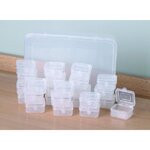Hi guys, I am not super new at pen turning but I have some questions about how "you" do it.
First I have only turned a mandrel, I see the preferred method is between centers. So does that mean just mount the bushings between the centers, or do you even use bushings? If you do use the bushings, that would put the one up against my spur drive and actually wouldn't even reach the spurs, so I'm not sure I could drive it without changing my drive center.
If you don't use the bushings, how do you get to the correct size? Just measure as you go?
I have seen the "mandrel saver" or whatever it's called from PSI, that seems like a hybrid between mandrel and between centers. Not sure I see point if you choose between center turning.
Second is how do you store your bushings? I keep mine in the original tiny ziplock bags. Then I keep all my "pen stuff" in a rubbermaid tote. (I only do pens occasionally) I always fear if I don't seal the bag well, I might find, for example, 2 empty baggies and 4 or 6 bushings running free in the bin. What do I do then?
Thanks for you help!
Chris
First I have only turned a mandrel, I see the preferred method is between centers. So does that mean just mount the bushings between the centers, or do you even use bushings? If you do use the bushings, that would put the one up against my spur drive and actually wouldn't even reach the spurs, so I'm not sure I could drive it without changing my drive center.
If you don't use the bushings, how do you get to the correct size? Just measure as you go?
I have seen the "mandrel saver" or whatever it's called from PSI, that seems like a hybrid between mandrel and between centers. Not sure I see point if you choose between center turning.
Second is how do you store your bushings? I keep mine in the original tiny ziplock bags. Then I keep all my "pen stuff" in a rubbermaid tote. (I only do pens occasionally) I always fear if I don't seal the bag well, I might find, for example, 2 empty baggies and 4 or 6 bushings running free in the bin. What do I do then?
Thanks for you help!
Chris

